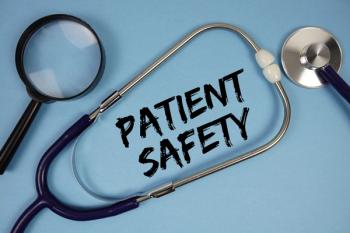
Are community pharmacists an endangered species?
Where is retail pharmacy headed? A look at where it's coming from may shed some light.
The way I see it, retail pharmacists are no longer relevant in healthcare. They have allowed themselves to be relegated to the position of overeducated technicians.
It didn’t have to be this way. In the 1960s, pharmacists had a chance to step up to the plate and become responsible for medical and pricing decisions, but they decided to defer to the powers that be and allowed pharmacy associations and universities to make decisions that were detrimental to the business of retail pharmacy.
Wrong turn at the crossroads
Pharmacy associations and universities tried to turn pharmacists into professionals by having them charge a professional fee when they dispensed a drug. This effectively limited the potential for profit on the drug involved. At that point, retail pharmacy lost control of its business.
Universities were teaching pharmacists more and more skills that they had no time to use in their practices - even if pharmacy boards had permitted, which they did not.
For example, pharmacists were taught that clinical pharmacy is the highest form of pharmacy practice. But now, in the retail setting, there is no time to use this training. Pharmacists are totally overworked by managers who are only concerned about the bottom line.
This bottom line has been affected by “professional fees” and illusory AWPs that have no relationship to what manufacturers actually charge for drugs. The manufacturers could offer pharmacies a discount and still make a huge profit.
This discount situation actually benefited PBMs and insurance companies, which soon realized that they could demand large discounts from drug manufacturers by threatening not to put their drugs on their preferred lists. At the same time, retail pharmacies were locked in at a low “professional fee.”
Now the PBMs and drug manufacturers are enjoying the profits that retail pharmacies could have shared if they had not accepted the “professional fee” in the 1960s.
When the profit motive is all
The profits generated by the manufacturers are phenomenal. When a drug manufacturer can pay a fine in excess of two billion dollars for illegally promoting off-label use of its drug and still stay in business, something is wrong with the system. Now some manufacturers are buying up generic drugs and pricing them with massively high AWPs, and nothing, apparently, can be done to stop them.
In order to increase their own income, the universities went to an extended curriculum, resulting in the PharmD, which they said would make the pharmacist a professional. The universities continued to entice students to come into pharmacy by promising high salaries. They have been successful in recruiting, because now any person can get student loans and can go to school for six to seven or more years.
Upon graduation, pharmacists are saddled with high payments and big debt. With many independent pharmacies now out of business because of reduced profits, pharmacists then have to accept positions in megapharmacies, where even with that doctorate degree all they can do is try to keep up with the prescription output required by management to sustain business.
This requirement for prescription output is driven by the “professional fee” and the artificial AWP.
Consequences
For a while, pharmacies could increase profit by increasing prescription output. But then, with PBMs and insurance companies claiming more and more of this profit by demanding more in discounts and in moves toward AAC (actual acquisition cost), things soon got to the point that in order to make a profit, pharmacies had to cut personnel.
With these cuts in personnel, pharmacists have become too busy to intervene unless they see something really detrimental to the customer. Even then, the managers are not happy, because they falling behind in their prescription outputs.
Meanwhile, physician assistants and nurse practitioners are right where pharmacists could have been. With a lot less education than pharmacists receive, they make decisions for patients and are able to receive pay based on these decisions.
Truman Lastinger tells the story of his 58 years in retail practice in “
Editor’s note: The importance of taking the long view is underscored by George Santayana’s famous dictum, “Those who cannot remember the past are condemned to repeat it.”
Along those lines, here is additional food for thought, from Winston Churchill, speaking in Britain’s House of Commons May 2, 1935:
“When the situation was manageable it was neglected, and now that it is thoroughly out of hand we apply too late the remedies which then might have effected a cure …. Want of foresight, unwillingness to act when action would be simple and effective, lack of clear thinking, confusion of counsel until the emergency comes, until self-preservation strikes its jarring gong - these are the features which constitute the endless repetition of history.”
On a happier note, it is also true that in every challenge lies opportunity. Can pharmacists step outside current constraints and embrace new and fulfilling forms of professional practice? Send your stories of successful professional transformation to
Newsletter
Pharmacy practice is always changing. Stay ahead of the curve with the Drug Topics newsletter and get the latest drug information, industry trends, and patient care tips.













































































































































